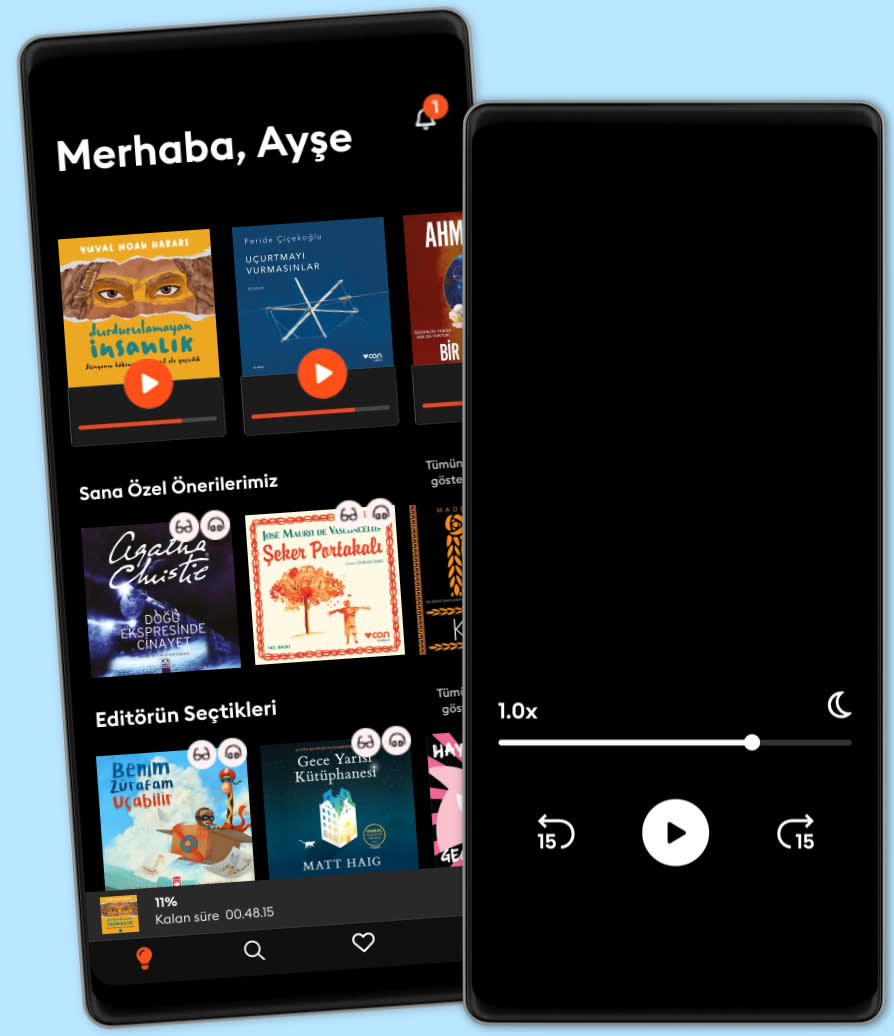Dinle ya da oku
Sesli kitapların büyülü dünyasına adım at.
- İlk ay ₺49,99
- Binlerce sesli kitap ve e-kitap.
- Dilediğin kadar dinle ya da oku.
- Çevrimdışı modu.
- İstediğin zaman iptal et.
Learn Operating System in 24 Hours
- Yazan
- Yayınevi
- Dil
- İngilizce
- Format
- Kategori
Kurgu Dışı
Table Of Content
Chapter 1: What is Operating System? Explain Types of OS, Features and Examples
What is an Operating System?
History Of OS
Examples of Operating System with Market Share
Types of Operating System (OS)
Functions of Operating System
Features of Operating System (OS)
Advantage of using Operating System
Disadvantages of using Operating System
What is Kernel in Operating System?
Features of Kennel
Difference between Firmware and Operating System
Difference between 32-Bit vs. 64 Bit Operating System
Chapter 2: What is Semaphore? Binary, Counting Types with Example
What is Semaphore?
Characteristic of Semaphore
Types of Semaphores
Example of Semaphore
Wait and Signal Operations in Semaphores
Counting Semaphore vs. Binary Semaphore
Difference between Semaphore vs. Mutex
Advantages of Semaphores
Disadvantage of semaphores
Chapter 3: Components of Operating Systems
What are OS Components?
File Management
Process Management
I/O Device Management
Network Management
Main Memory management
Secondary-Storage Management
Security Management
Other Important Activities
Chapter 4: Microkernel in Operating System: Architecture, Advantages
What is Kernel?
What is Microkernel?
What is a Monolithic Kernel?
Microkernel Architecture
Components of Microkernel
Difference Between Microkernel and Monolithic Kernel
Advantages of Microkernel
Disadvantage of Microkernel
Chapter 5: System Call in OS (Operating System): What is, Types and Examples
What is System Call in Operating System?
Example of System Call
How System Call Works?
Why do you need System Calls in OS?
Types of System calls
Rules for passing Parameters for System Call
Important System Calls Used in OS
Chapter 6: File Systems in Operating System: Structure, Attributes, Type
Chapter 7: Real-time operating system (RTOS): Components, Types, Examples
Chapter 8: Remote Procedure Call (RPC) Protocol in Distributed System
Chapter 9: CPU Scheduling Algorithms in Operating Systems
Chapter 10: Process Management in Operating System: PCB in OS
Chapter 11: Introduction to DEADLOCK in Operating System
Chapter 12: FCFS Scheduling Algorithm: What is, Example Program
Chapter 13: Paging in Operating System(OS)
Chapter 14: Livelock: What is, Example, Difference with Deadlock
Chapter 15: Inter Process Communication (IPC)
Chapter 16: Round Robin Scheduling Algorithm with Example
Chapter 17: Process Synchronization: Critical Section Problem in OS
Chapter 18: Process Scheduling: Long, Medium, Short Term Scheduler
Chapter 19: Priority Scheduling Algorithm: Preemptive, Non-Preemptive EXAMPLE
Chapter 20: Memory Management in OS: Contiguous, Swapping, Fragmentation
Chapter 21: Shortest Job First (SJF): Preemptive, Non-Preemptive Example
Chapter 22: Virtual Memory in OS: What is, Demand Paging, Advantages
Chapter 23: Banker’s Algorithm in Operating System [Example]
© 2022 PublishDrive (E-Kitap): 6610000380787
Yayın tarihi
E-Kitap: 19 Temmuz 2022
Etiketler
Bunları da beğenebilirsin...
- 97 Principles for Software Architects: Axioms for software architecture and development written by industry practitioners Multiple Authors
- Agile: Essentials of Team and Project Management. Manifesto for Agile Software Development Alex Campbell
- Software Engineering Fundamentals Introbooks Team
- Docker Essentials: Simplifying containerization : A Beginner's Guide Mike Wilson
- Coders: Who They Are, What They Think and How They Are Changing Our World Clive Thompson
- Devops: Building Software With Lean Process For Modern Business Steven Branson
- Programming Interviews For Dummies Eric Butow
- Javascript: Ultimate Beginners Guide Leonardo Gorman
- Electronics All-in-One For Dummies, 3rd Edition Doug Lowe
- Mastering Java: Building Robust Applications: A Comprehensive Guide to Java Programming Michael Johnson
- Rezonans Kanunu Pierre Franckh
4.3
- İnce Memed 1 Yaşar Kemal
4.9
- Yılanı Öldürseler Yaşar Kemal
4.7
- Gece Yarısı Kütüphanesi Matt Haig
4.6
- Dünyanın En Önemli Öğrencisi Şermin Yaşar
4.7
- İnce Memed 2 Yaşar Kemal
4.8
- Yüzüklerin Efendisi: Yüzük Kardeşliği J.R.R. Tolkien
4.8
- Beni Gözünüzde Büyütmeyin! Gülse Birsel
4.6
- Kürk Mantolu Madonna Sabahattin Ali
4.5
- Söyleme Bilmesinler Şermin Yaşar
4.7
- Harry Potter ve Felsefe Taşı J.K. Rowling
4.3
- İnsan Ne İle Yaşar Lev Nikolayeviç Tolstoy
4.6
- 4 Gün 3 Gece Ayşe Kulin
4.1
- Fareler ve İnsanlar John Steinbeck
4.7
- Şeker Portakalı José Mauro de Vasconcelos
4.8
Storytel dünyasını keşfet:
Kids mode
Çevrimdışı modu
İstediğin zaman iptal et
Her yerde erişim
Sınırsız
Sınırsızca dinlemek ve okumak isteyenler için.
1 hesap
Sınırsız erişim
İstediğin zaman iptal et
Sınırsız Yıllık
Sınırsızca dinlemek ve okumak isteyenler için.
1 hesap
Sınırsız erişim
İstediğin zaman iptal et
Light
Ara sıra dinleyen ve okuyanlar için.
1 hesap
9 saat/ay
İstediğin zaman iptal et
Aile (2 hesap)
Hikayeleri sevdikleri ile paylaşmak isteyenler için.
2 hesap
Sınırsız erişim
İstediğin zaman iptal et
Aile (3 hesap)
Hikayeleri sevdikleri ile paylaşmak isteyenler için.
3 hesap
Sınırsız erişim
İstediğin zaman iptal et
Türkçe
Türkiye
